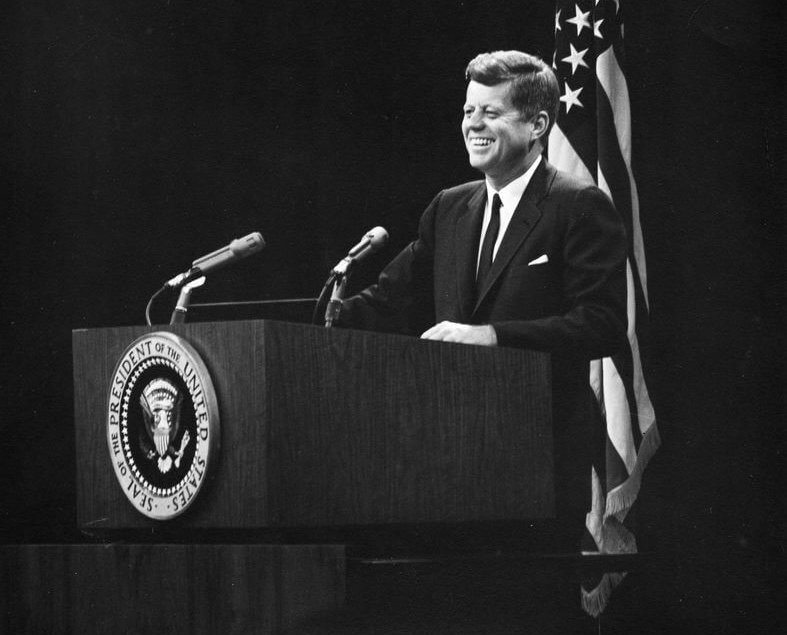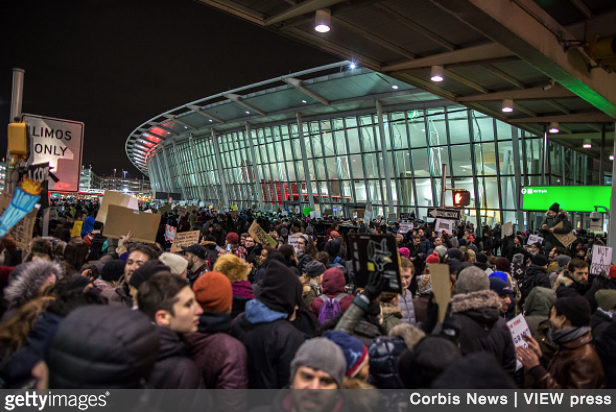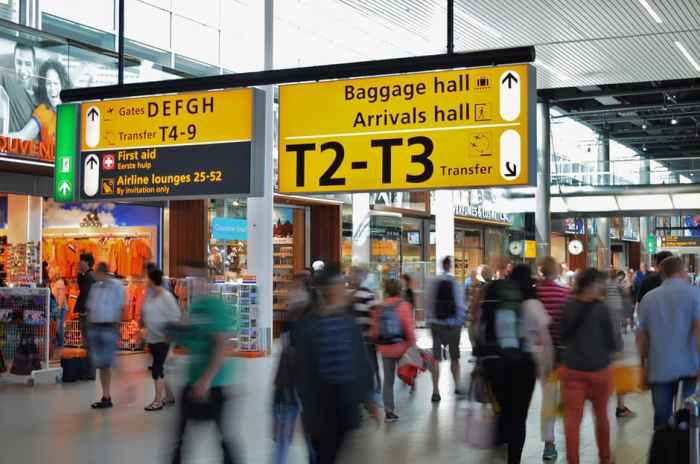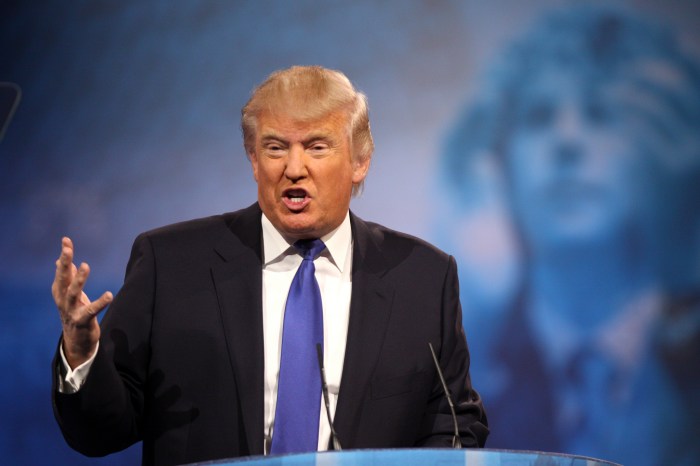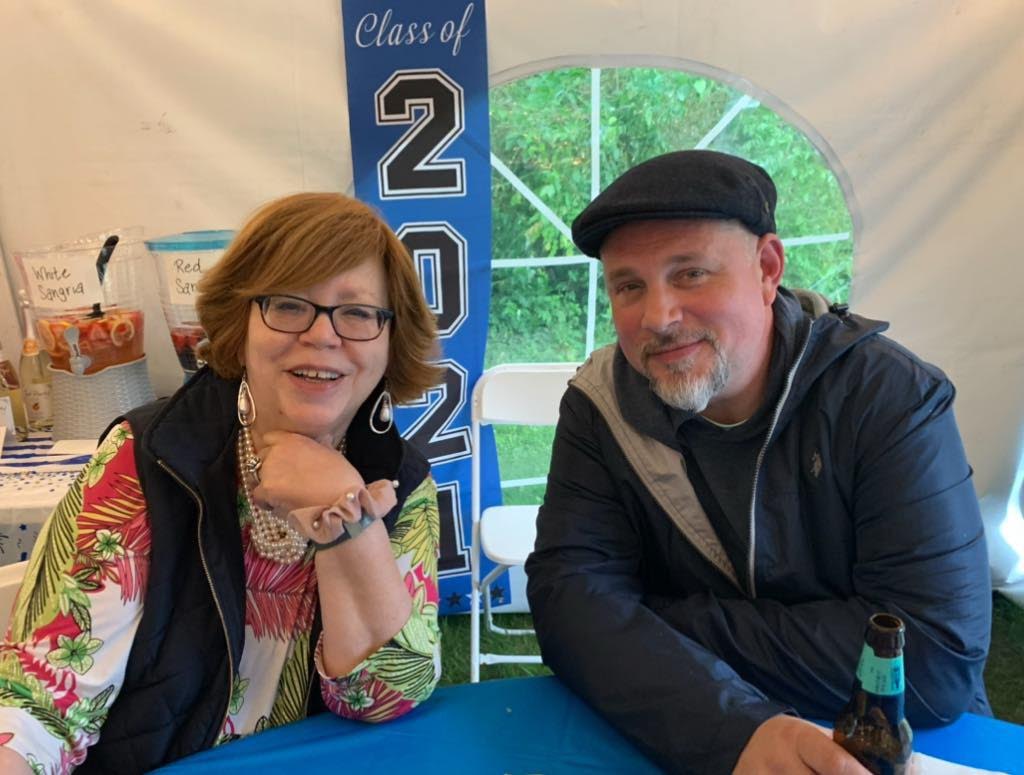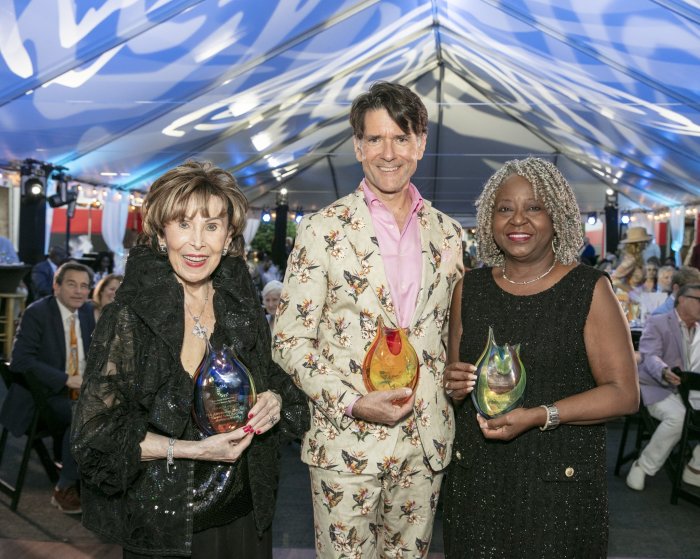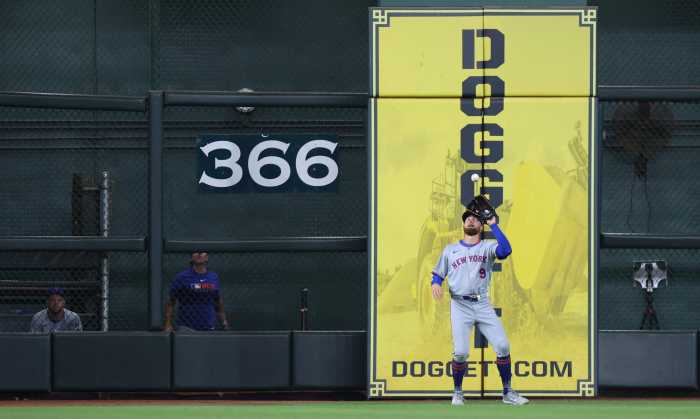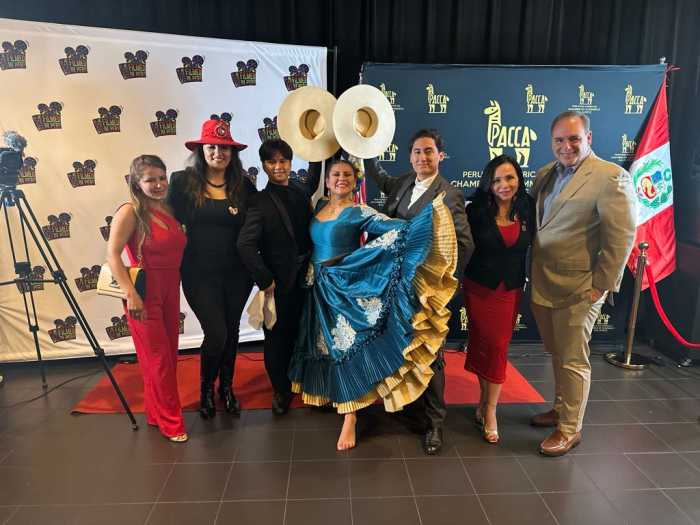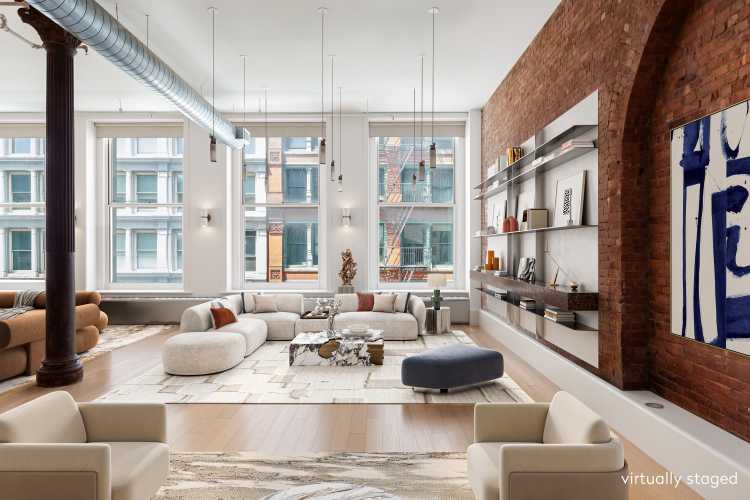As it often goes with presidents, John Fitzgerald Kennedy was both revered and reviled around the world as well as in the U.S. and on Long Island. But before he became president, when he was a teenager, he got more attention than he expected for driving too fast on a Long Island turnpike. Years later, in 1959, he returned to Long Island on a fundraising trip to Garden City, and the next year, he took his presidential campaign to Commack.
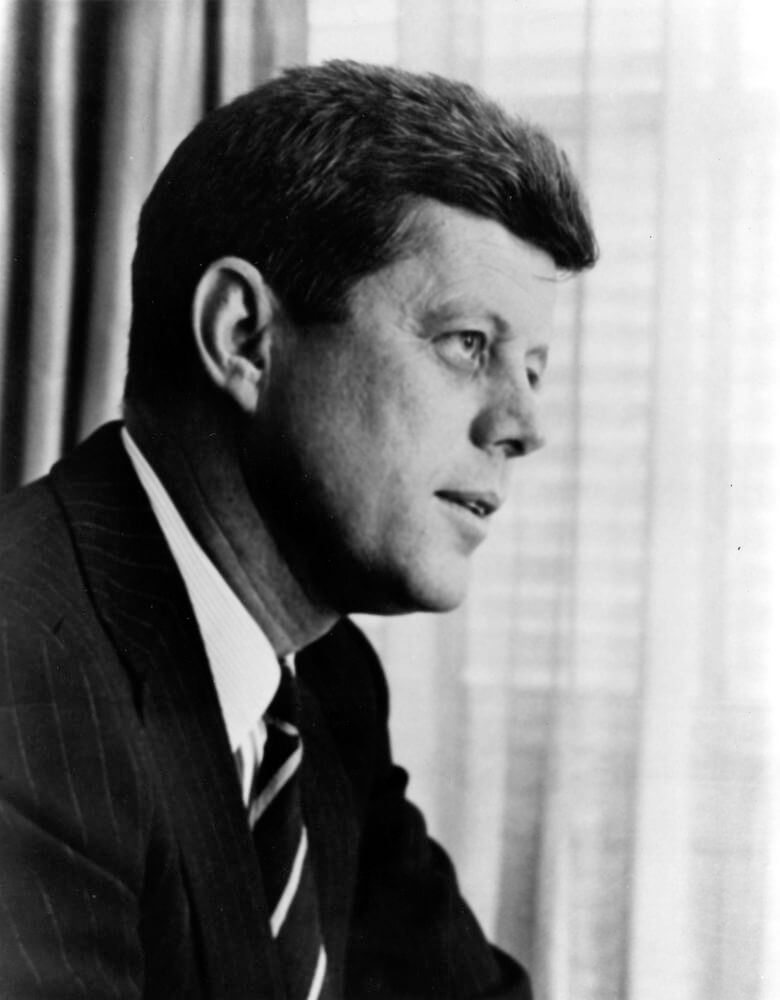
OUT FOR A SPIN
The Kennedy dynasty, descended from Joseph P. Kennedy Sr., was a powerful, wealthy force, with sprawling vacation compounds in Hyannisport, Massachusetts and in Bridgehampton, Long Island. The Kennedys ran out front, always ambitious, ever ahead of the pack; the young John F. (“Jack”) Kennedy was no different.
Born on May 29, 1917 in Brookline, Massachusetts, he lived a life full of privilege and impressive achievements. He was an avid reader who processed 2,500 words per minute, nearly 10 times the average. Some say he read six newspapers, cover to cover, every morning at breakfast; as an adolescent in boarding school, he had a daily subscription to The New York Times. He was named “most likely to succeed” by his high school classmates. And he could speak fast, very fast, as many as 350 words each minute.
He was a popular redhead with a bright shock of hair, known for easily flashing a winning smile. But his charm didn’t get him off the hook with the motorcycle cop who nabbed him for traveling at an excessive speed when he was just 18: It happened on Aug. 11, 1935, around 9:30 a.m., when Kennedy took Daddy’s car out for a spin. He was speeding west on Route 25 (Jericho Turnpike) in Middle Island when he caught the eye of motorcycle policeman Jake Backensky, who pulled the young driver over. The policeman ticketed Kennedy for passing two lanes of traffic in one direction, later writing, “At that time he was about 18 years old and a gentleman.” The ticket, on display at the Suffolk County Police Museum in Yaphank, notes that Kennedy pleaded guilty and was fined $3.00.
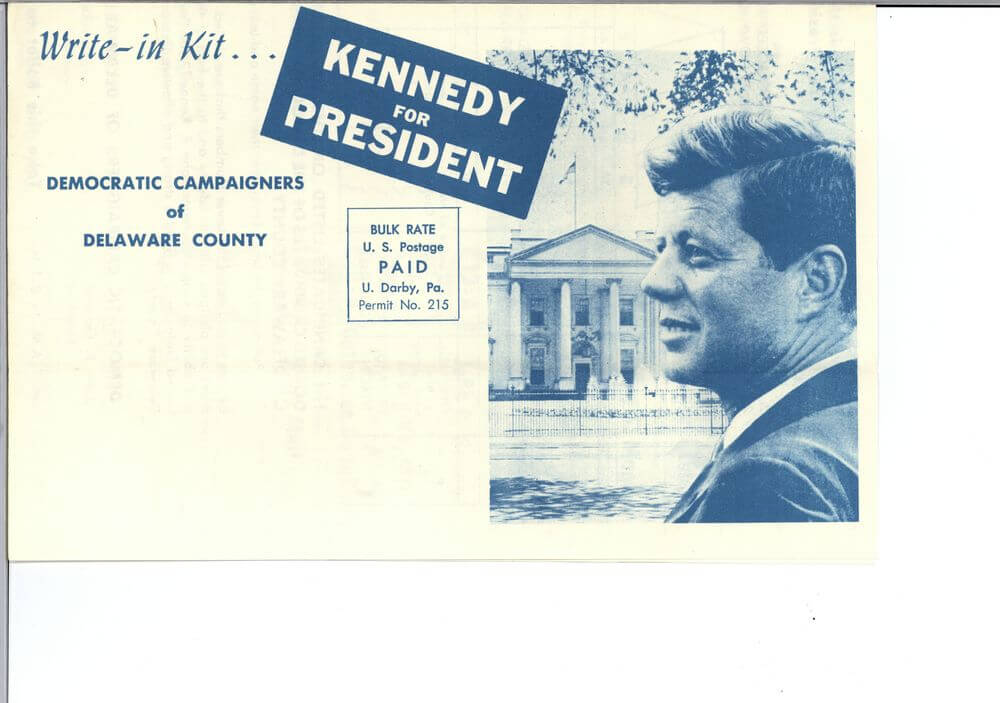
METEORIC RISE AND COUNTDOWN
Kennedy (JFK) was an ambitious, popular liberal Democrat and a Roman Catholic. The John F. Kennedy School of Government at Harvard observed that “Kennedy knew political ambition from an early age, and his meteoric rise to become the youngest elected president cemented his status as one of the most mythologized figures in American history.” He graduated from Harvard in 1940 with a bachelor of arts in government and joined the Navy. He was only 29 in 1946 when he ran for Congress in Massachusetts’ 11th congressional district. He won and served three terms in the House of Representatives. In 1953 he was elected to the U.S. Senate and married Jacqueline Bouvier, whose family spent summers in East Hampton.
The crucial election countdown began when he hit the political trail as an unofficial candidate. He concentrated on speaking dates all over New York, starting with the Garden City Hotel in June 1959 at a Democratic fundraising dinner. After being nominated in July 1960 by the Democratic Party to be president, he spoke at the Long Island Fair at Roosevelt Raceway in Mineola in October 1960.
He became an eloquent speaker, as Russell Baker observed in The New York Times, writing that JFK “has flowered into a magnificent campaigner with a Pied Piper magic over the street crowds, and especially the ladies…”
On Nov. 5, three days before the election, the JFK motorcade traveled along Hempstead Turnpike through East Meadow and Levittown, winding up in Wantagh to be greeted by a throng of supporters and Hempstead police trying to control the crowd. He told his admirers, “Let’s have the word come out Tuesday night all the way to California that Nassau County has gone Democratic.”
The countdown continued: Two days before the election, at the Long Island Arena in Commack on Nov. 6, he addressed well-wishers from the back seat of a convertible, urging them to go Democrat. He observed that Suffolk County was “not celebrated as one of the strongest Democratic counties north of the Mason-Dixon Line.”
JFK was not universally lauded: According to Politico.com, “Southern conservatives condemned the Democratic Party’s increasingly liberal tendencies, especially regarding civil rights, while evangelical preachers stoked old sectarian hatreds from the pulpit;” far-right activists flooded states with anti-Catholic pamphlets. Journalist Thomas E. Ricks wrote that Kennedy “probably was the worst American president of the previous century,” who “spent his 35 months in the White House stumbling from crisis to fiasco.”
Kennedy became the 35th president on Nov. 8, 1960, in a bitter contest against incumbent Vice President Richard Nixon, in one of the closest elections in American history. Some people still doubt its outcome, according to the nonpartisan National Constitution Center.
FINAL FIRSTS
His election added to a long list of distinctions: A voracious reader. Fast talker. Most likely to succeed. At 43, he was the youngest person to be elected president. He was the first Roman Catholic president. He never lost an election. And he was the youngest president at the end of his tenure.
Campaigning again from the back seat of a convertible in Dallas, Texas with his wife Jackie, he was assassinated on Nov. 22, 1963. He had won the election but lost his life.




